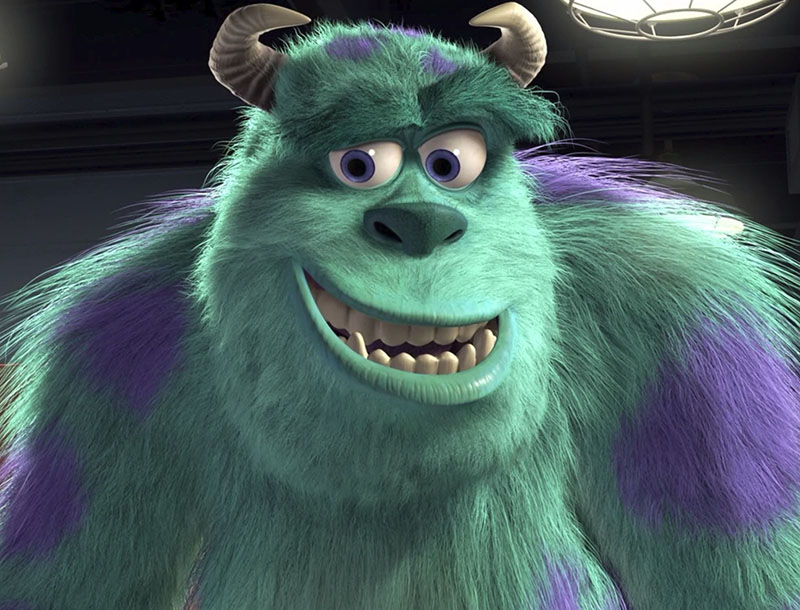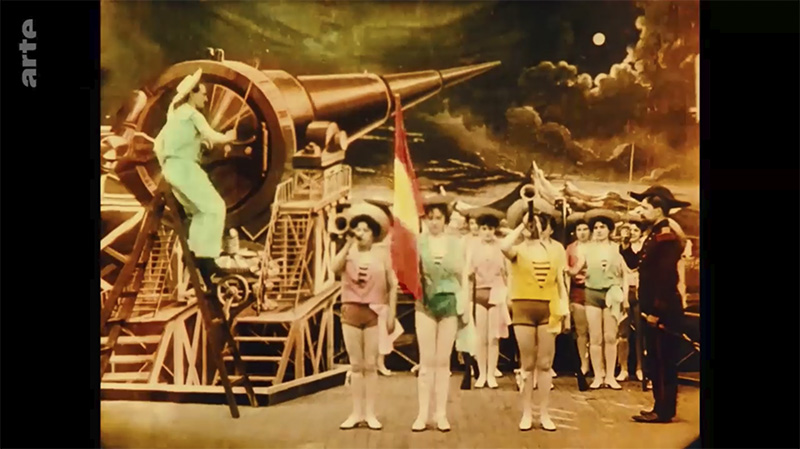Nowadays the movies are full of animations, never mind if it’s a kids movie or a sci-fi blockbuster.
In the fully animated movie Monsters, Inc., released in 2001, all the figures, landscapes and effects were digitally created on the computer. The success of the movie came not only because of the funny story, but was also due to the incredibly high details the characters and the whole “set” showed. The monster Sullivan, for example, was rendered with a fur containing 2.3 million hairs!

Now, twenty years later, the possibilities to trick the audiences of course have increased. For movie studios it’s easy to put real actors into completely animated sceneries. Due to the increase in computing power everybody who’s capable of using a smartphone can easily morph their self portraits into younger or older versions of themselves. With some experience you should even be able to produce deepfake videos – a technique where mostly (famous) peoples’ faces are mapped onto faces in real videos or images. Taking the fact that these deepfakes, generated with help of machine learning and artificial intelligence, seem extremely realistic, the method of deepfake should be handled with care even though really funny things are possible.
Besides highly detailed digital effects, 3D-animations and renderings connecting reality and imagination on a level never reached before, all the movies we watch still make use of pretty easy tricks. Simple cuts and montage do not only create concise coherence but also create specific atmospheres and evoke emotions in the audience.
These methods are nothing new and neither connected to digital processes nor analog techniques – actually they have been used since the very early beginnings of film and movies in the early 20th century.
One of the pioneers of film was Georges Méliès, a French magician and manager-director of the Théâtre Robert-Houdin. Inspired by the Lumiere brothers’ performance of early motion pictures showing real life scenes, Méliès started to film scenes and experimented with the matter, which lead him to develop camera techniques such as stop-motion, slow-motion, superimposition or double exposure.
In a glass studio he built in the surroundings of Paris, Georges Méliès started to create theatrical sceneries, which in combination with film and camera made fictional narratives possible, like his most famous film Le Voyage dans la Lune from 1902. This movie showed the story of a handful of astronomers taking an adventurous journey to the moon via a cannon capsule and returning back to earth and thus can be seen as the first science fiction movie.
However as movies became more and more popular, big commercial film studios entered the market and forced Méliès out of business. In 1923 Georges Méliès burnt his entire life’s work with over 500 films, featuring partially hand colored movies, combining magic tricks, theatrical stage props and a variety of fantastic stories.
Luckily some (master) copies of his films survived around the globe and the genius of Méliès was rediscovered and the importance of his work was acknowledged by critics in the 1930s.
Almost one century after its first release, a colored copy of Méliès’ master piece was restored by Lobster Films. Between 1999 and 2010, up to date digital tools were used to carefully refurbish each of the 13,375 frames of the film, for which missing frames – lost or too damaged – have been taken from the black and white version and colored afterwards.

Taking into account that this movie reel was lost for decades, the digitally restored version partially resembles a hi-resolution short film, using numerous effects to make it look like it’s 100 years old.

Eventually Méliès’ Le Voyage Dans La Lune is a great example for what effects and analog techniques have been used from the beginning of film til nowadays as well as the resilience of analog media. Additionally the carefully restored version shows the possibilties of digital editing and it’s depth and accuracy.
Sources
https://de.wikipedia.org/wiki/Die_Monster_AG
https://disney.fandom.com/wiki/James_P._Sullivan?file=Profile_-_Sully.jpeg
https://www.britannica.com/biography/Georges-Melies
https://www.arte.tv/de/videos/099870-000-A/das-geheimnis-georges-melies/
https://www.arte.tv/de/videos/041651-000-A/die-reise-zum-mond/